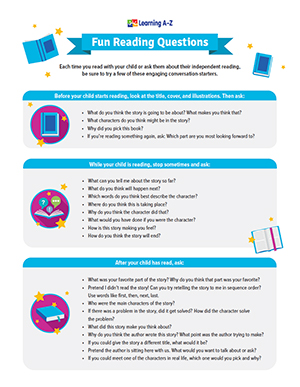Explore the magic of storytelling at home with your young readers! Children love listening to you read to them. While you read, you’re actually strengthening their listening abilities, vocabularies, and memories.
There’s an art to setting the scene for the story, which can help create ambiance and engage your children’s attention. Try some of our tips for fun things you can do to help draw your audience into the story! Create a love of storytelling in your children while you enjoy rediscovering it for yourself.
- Read the book yourself ahead of time, so you know the story before you get started. This helps you set the proper tone for the story and allows you to plan your approach.
- Create a spot for children to sit and relax while they listen, like an area of pillows and cushions, or a mat or blanket to define boundaries.
- Introduce the story before you start. You can talk about the title, subject, cover art, author, or anything else that might be interesting for the kids to know up front.
- Read the story in a loud, clear voice. Try different voices and tones to convey different feelings or portray various characters. Have fun with language and sounds.
Try these ideas too, when the occasion calls for it!
- Reading a scary story? Try cozying up in a darkened room with flashlights!
- Remembering the past? Bring out old toys from when your child was younger.
- Use a felt board, whiteboard, chalkboard, or sheets of newsprint to draw the story as you tell it.
- Have children act out the story by pretending to become the characters!
- Try using props during your storytelling! These can be things featured in the story, objects from around the house, or stuffed animals used as puppets to help tell the story.
- Ask your young readers to write a postcard to the author.
- Before you start, have everyone work together to build a pillow fort. It’s a fun activity and creates the perfect cozy place to settle down afterwards to listen.
- Dress up as a character yourself and have fun reading the story in that character’s voice.
- Have your child write their own sequel to this story.
- Set up an art station with drawing supplies and have kids draw their favorite scene from the book.
Reading Questions
Whether you’re reading aloud or your child is reading independently, you can still be reading together. Talking to your children about what they’re reading is a great way to support their literacy development. When you engage your child in conversation about their reading, you’re letting them know reading is important and interesting. And here’s the best part: while you talk with them, they’re actually building comprehension skills like inferencing, summarizing, and comparing and contrasting.
But what are some of the best questions you can ask to spark and sustain an engaging and productive discussion? Try our free set of fun reading questions! Download and use these questions to help your young readers strengthen their skills.



